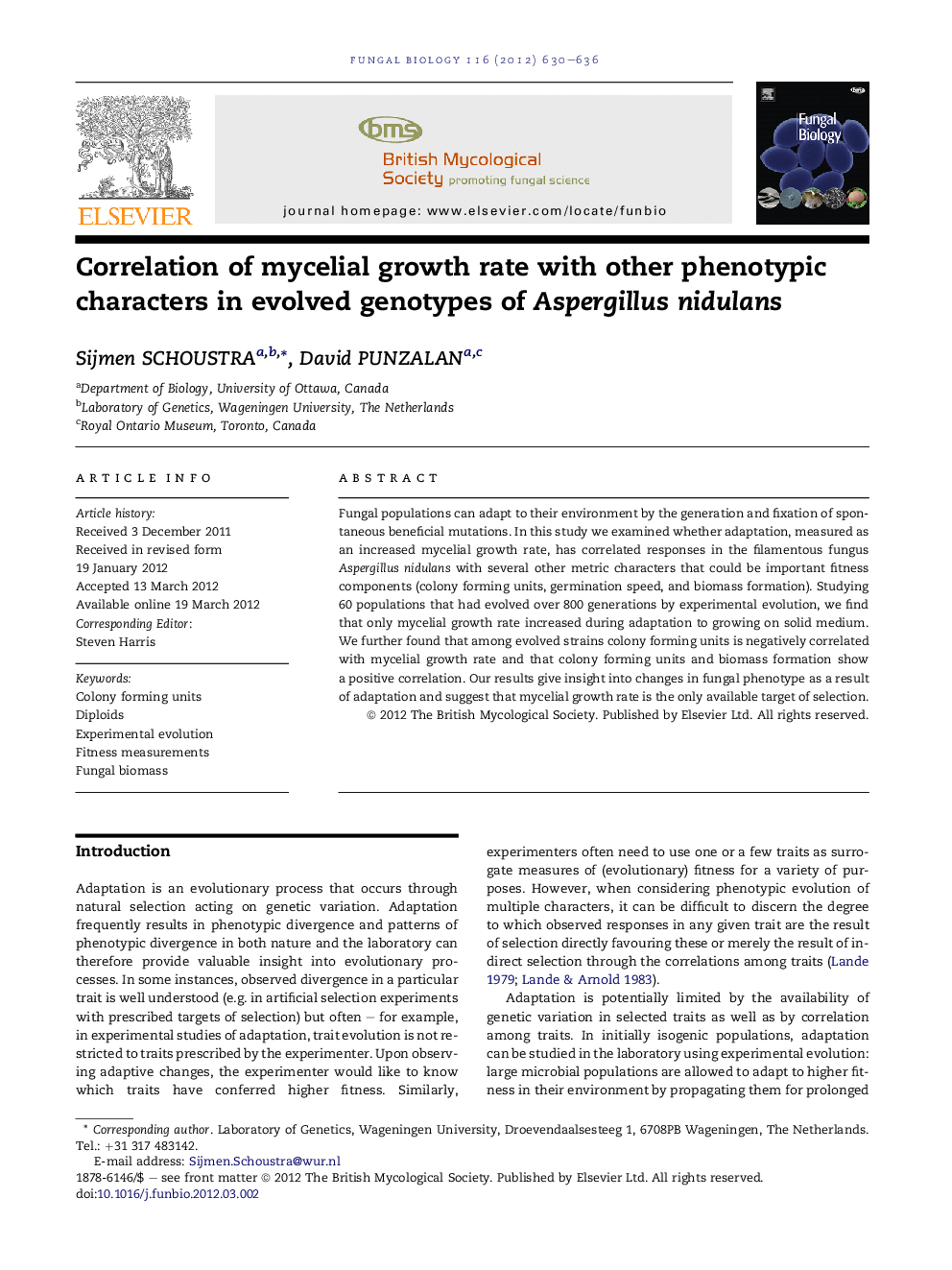| Article ID | Journal | Published Year | Pages | File Type |
|---|---|---|---|---|
| 4357193 | Fungal Biology | 2012 | 7 Pages |
Fungal populations can adapt to their environment by the generation and fixation of spontaneous beneficial mutations. In this study we examined whether adaptation, measured as an increased mycelial growth rate, has correlated responses in the filamentous fungus Aspergillus nidulans with several other metric characters that could be important fitness components (colony forming units, germination speed, and biomass formation). Studying 60 populations that had evolved over 800 generations by experimental evolution, we find that only mycelial growth rate increased during adaptation to growing on solid medium. We further found that among evolved strains colony forming units is negatively correlated with mycelial growth rate and that colony forming units and biomass formation show a positive correlation. Our results give insight into changes in fungal phenotype as a result of adaptation and suggest that mycelial growth rate is the only available target of selection.
► We measured four phenotypic traits of 60 strains of Aspergillus nidulans. ► Strains had been propagated over 800 generations of experimental evolution. ► Evolved strains show higher mycelial growth rate (MGR) than the evolutionary ancestor. ► Colony forming units, spore germination and biomass formation had not increased. ► This suggests only beneficial mutations affecting MGR were available.
